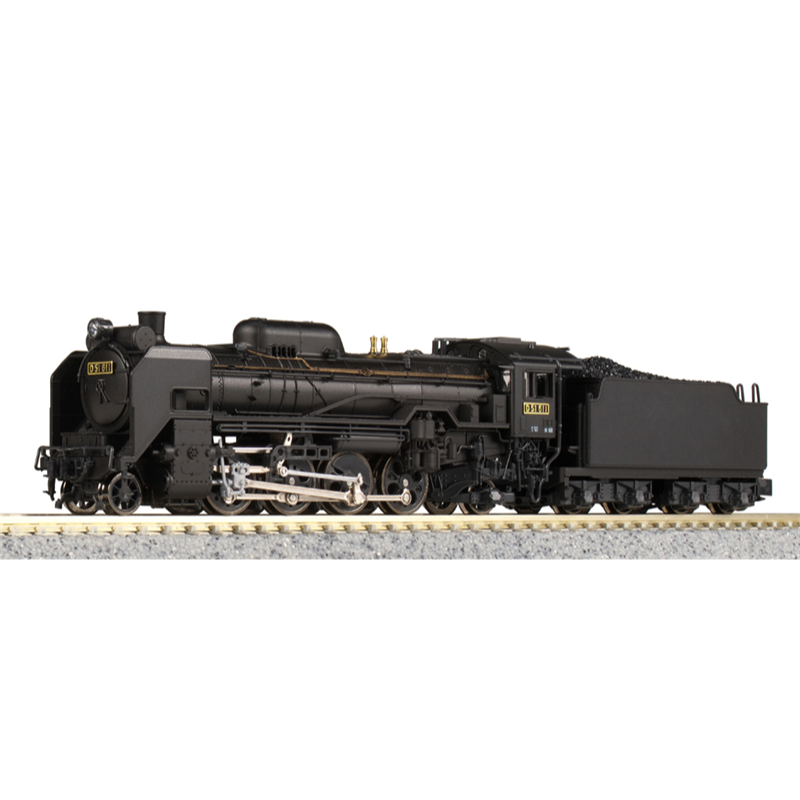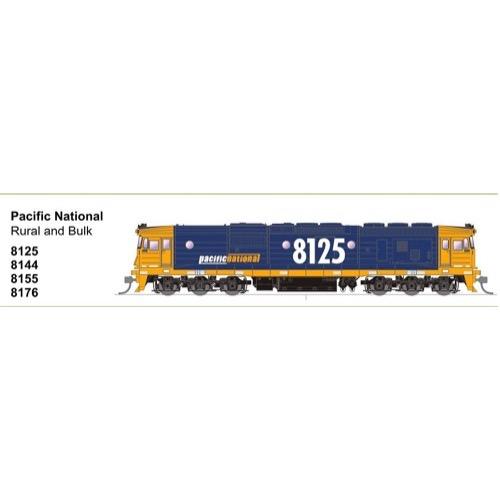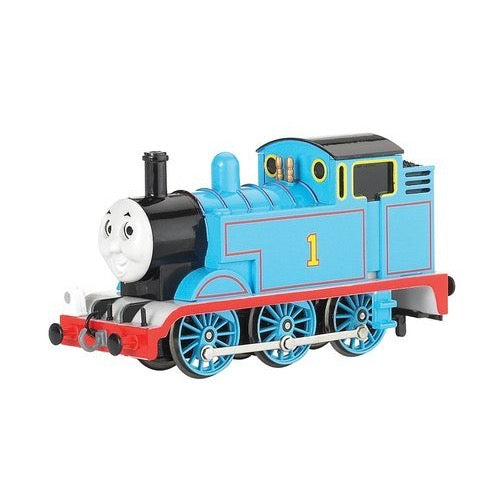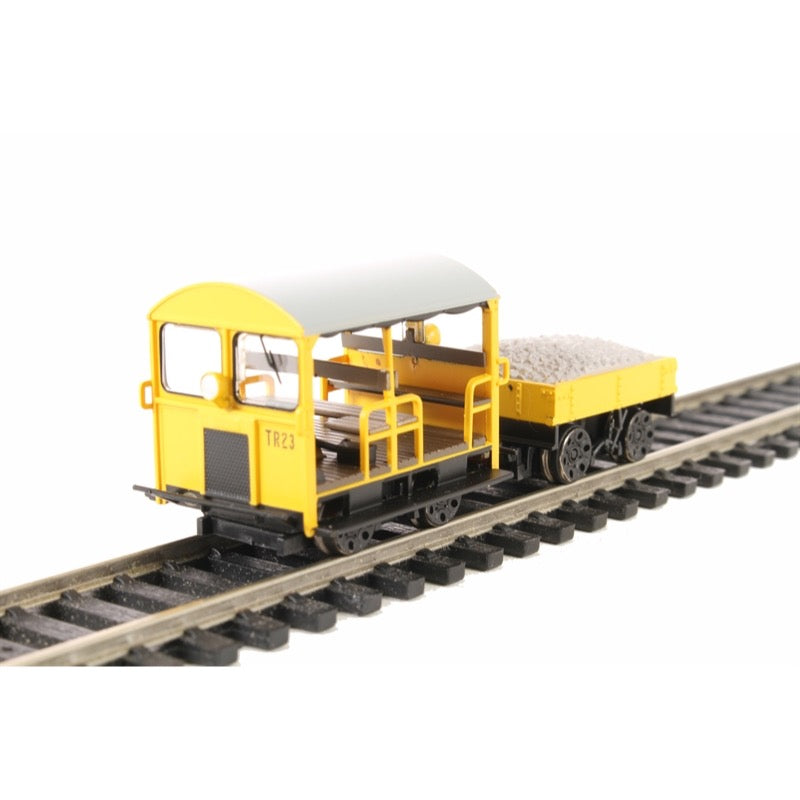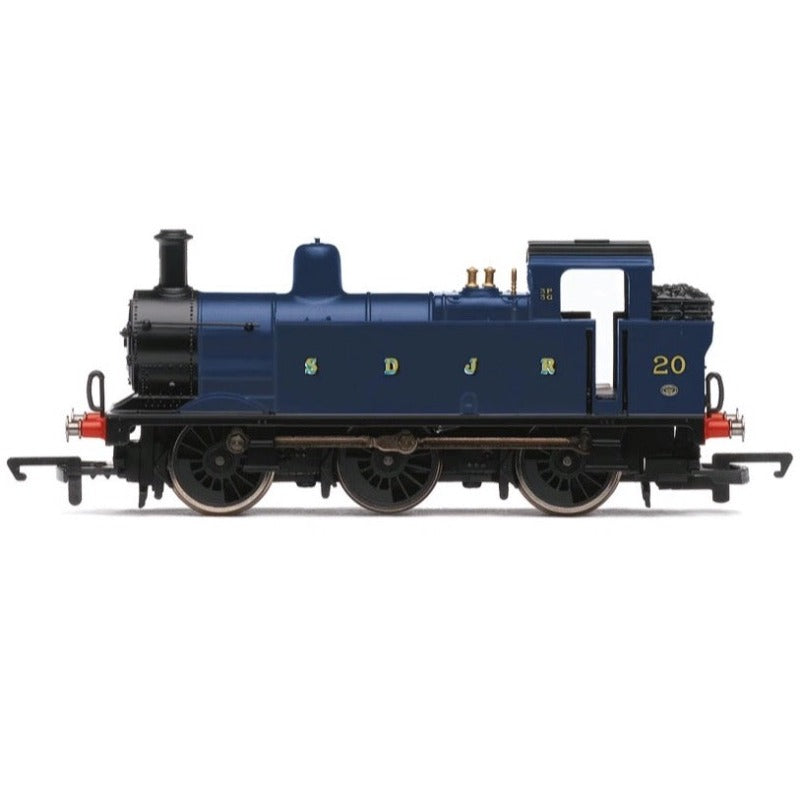
Hornby R30316 OO RailRoad S and DJR Class 3F Jinty 0-6-0 No. 20 Era 2 Locomotive
The 3F 'Jinty' was an LMS tank engine inspired by the design of a Midland Railway designed tank engine. Henry Fowler saw potential in the Midland Railway 2441 Class which itself would prove so dependable that they would last in service until 1966. The Jinty was a simple design with inside cylinders and belpaire firebox that allowed the locomotive to reach up to 60mph. Locomotives were fitted with steam heating for working short passenger trains, which was a far cry from their initial brief as a shunting engine.
The 3F would be the main shunting and tank engine of the LMS and would find itself serving all over the UK when the class came into the ownership of BR in 1948. The Jintys would prove to be useful engines even after larger freight engines would be introduced with some examples lasting until 1967 in service. 9 examples of the class have been preserved including the last to be withdrawn.
An iconic user of the 3F class was the fairly unique Somerset and Dorset Joint Railway. The SDJR became a part of the LMS in 1923 when the grouping act came into effect however it would not have its identity absorbed into that of the LMS. The SDJR would run its locomotives in either its time honoured 'Prussian Blue' livery with SDJR lettering or SDJR Black. The SDJR took delivery of seven examples of the locomotive in 1928. These locomotives would only stay at the railway for a couple of years, being absorbed into the LMSR in 1930 and redistributed.
Locomotive number 20 was delivered to the SDJR straight from the manufacturer, Bagnall, in 1928. When it entered the LMS pool of Jintys it would be renumbered 7151. Shortly after this, during a renumbering scheme it would be renumbered again to 7311. The locomotive would enter War Department service before being returned to its standard service, although now with BR as 47311. The locomotive would spend much of its BR life stationed in London before being withdrawn from the Stratford shed in 1960, being scrapped shortly after.
The Hornby Jinty is fitted with a 3 pole motor and simple gearing, proving to be a reliable runner on any layout.
Specifications
- Item Length - Without Packaging (cm): 11
- Item Height - Without Packaging (cm): 4
- Item Width - Without Packaging (cm): 3.5
- Item Weight - Without Packaging: 0.18
- Item Scale: 1:76 Scale 00 Gauge
- Finish: Painted
- Colour: Blue
- Gauge: OO
- Operator: S&DJR
- Designer: Henry Fowler
- Wheel Configuration: 0-6-0
- Livery: S&DJR 'Prussian' Blue
- Minimum Curve (mm): Radius 2
- Motor: 3 Pole
- Number of Parts: 1
- Buffer Type: Fixed Metal Buffers
- Coupling Type: Fixed Tension Lock
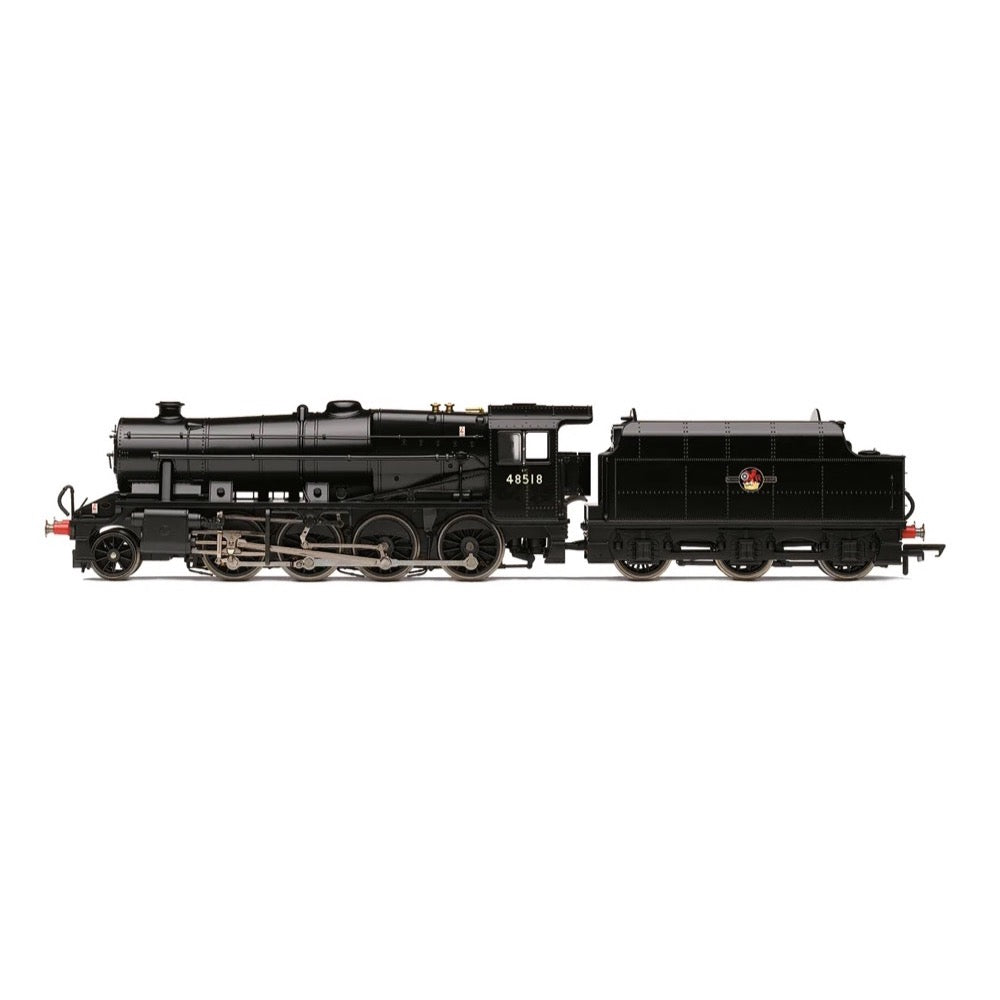
Hornby R30282 OO BR Class 8F 2-8-0 No. 48518 Era 5 Locomotive
The Stanier designed LMS Class 8F was many things, it was one of the most widespread 2-8-0 locomotive ever used in Britain, it was a war hero, an expat, but maybe more importantly it was a dependable servant of the freight industry. 852 examples of the class were built over an eleven years of construction with an example being built in almost every locomotive works around the UK.
This is quite unusual as a competing rail company would not wish to allocate valuable shed time to a competitors locomotive however the locomotive was chosen by the war department to be the standard freight engine of the war effort. This led to their construction on every part of the UK network, as at a time of war even the fiercest national competitors would need to put their differences aside to work towards the common goal of peace.
Examples of the 8F locomotive could, at their geographical peak, could be found in the UK as well as Italy, Turkey, Iran, Palestine, Israel and Egypt. 225 examples would find themselves in service overseas initially in Egypt and Iran before those locomotives were disseminated around the Middle East and parts of Europe as and where demand dictated. Most of these locomotives would not return to the UK and would continue to be used in revenue earning service well after the withdrawal of steam on the UK network.
Overseas examples would go on to be withdrawn in the 1970s and 80s, with most examples being scrapped. Back home in the UK, the last examples would be withdrawn at the end of steam on BR in 1968, a large number have been preserved. Two Class 8Fs represent a rare sight in the world of diving, going down with the SS Thistlegrom. These locomotives are clearly visible on the seafloor with the ship, becoming a major tourist attraction in recent years.
Locomotive 48518 as it was known in BR service entered service in August 1944 as the LMS locomotive 8518. Only a few years later it would have its number increased in line with its class as it entered BR service. The locomotive would work a career of almost 21 years before being withdrawn in July 1965. The locomotive would enter preservation, albeit briefly as it would go on to be used as a spares donor for the 6 other UK based 8Fs. The frames were scraped in 2013, and the boiler will be used on 48173 on the Churnet Valley Railway.
The 8F model is presented in its imposing black livery, perhaps more understated than its prowess would deserve. The model is fitted with tender pickups as well as an 21 pin DCC socket allowing the model to be operated on a digital layout if required.
Specification
- Item Length - Without Packaging (cm): 25
- Item Height - Without Packaging (cm): 5
- Item Width - Without Packaging (cm): 3.5
- Item Weight - Without Packaging: 0.4
- Item Scale: 1:76 Scale 00 Gauge
- Finish: Painted
- Colour: Black
- Gauge: OO
- DCC Status: DCC Ready 21 pin socket
- Operator: BR
- Designer:William Stanier
- Wheel Configuration: 2-8-0
- Livery: BR Black
- Minimum Curve (mm): Radius 2
- Motor: 5 Pole Skew wound
- Number of Parts: 1
- Class: 8F Class
- Buffer Type: Sprung Metal Buffers
- Coupling Type: NEM Tension Lock
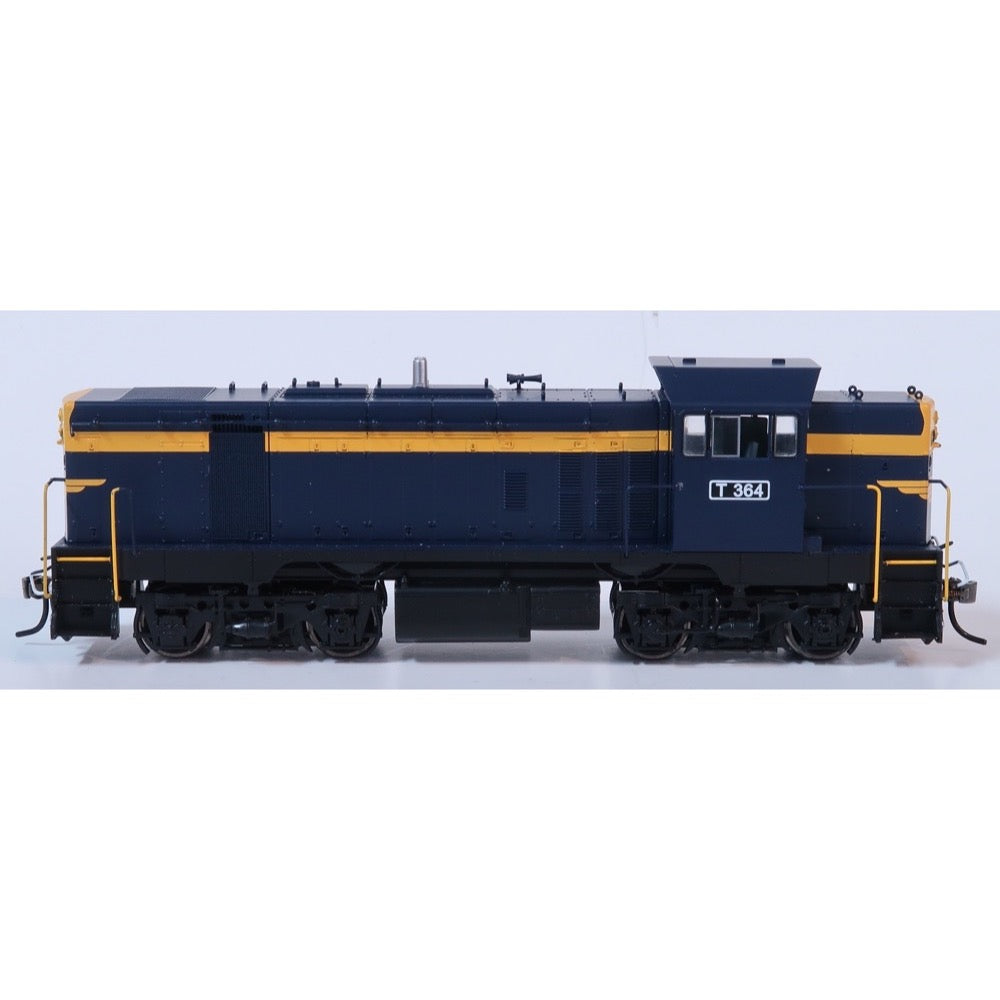
Powerline PT2-1-364 HO VR Blue and Yellow T-Class Series 2 (T3) T364 with Cut Away Valance
T364 VR Blue/Hold
- HO Scale
- T-Class Bo-Bo Diesel-Electric
- Series 2 High Nose T3
- DCC Ready Speaker Fitted
- Requires ESU V5.0 21-pin DCC decoder
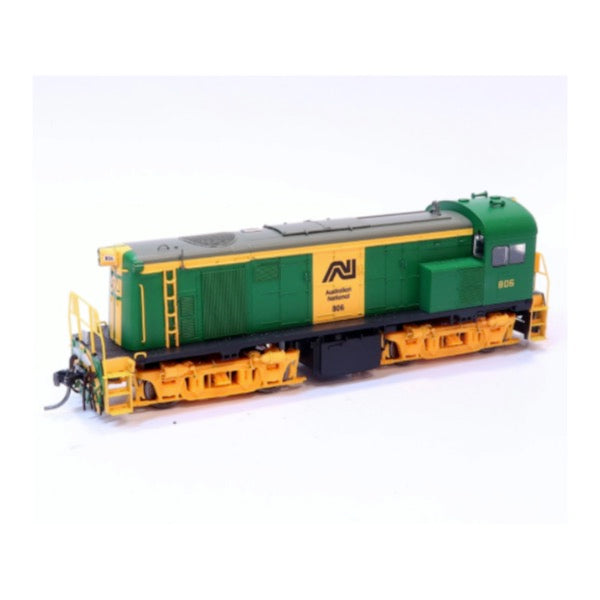
SDS Models HO 806 AN Green & Yellow 800 Class Locomotive DCC Sound
Entering service from the mid 1956 onwards these 10 English Electric 750 HP shunting locomotives were numbered from 800 to 809. They were predominantly found working around Port Adelaide and in particular Gilman Yard. Later and from time to time they could also be found working Passenger trains around the suburbs. They remained in service until the late 80s and some units through until 1991, all except 801 were scrapped. When AN commenced operations the class leader 800 was renumbered to 810.
Features
- Highly detailed Ready-to-Run HO gauge model
- Precisely tooled plastic body (ABS)
- Genuine Kadee scale head whisker coupler
- Separately applied handrails and detail parts
- 5-Pole skew wound electric motor and dual flywheels
- All wheel drive and electrical pickup
- LED head and marker lights, body mounted
- All models come standard with an MTC 21 pin motherboard
- Exclusive sound by DCCSound
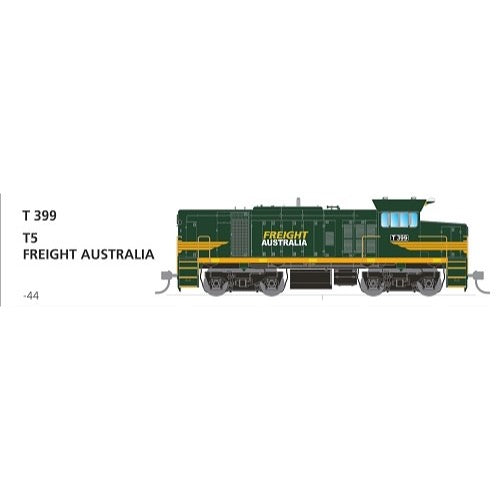
SDS Models HO T399 Freight Australia T5 Series T Class Locomotive
SDS Models HO T399 Freight Australia T5 Series T Class Locomotive

Hornby R30339 Hornby 70th Westwood 0-4-0, No. 7 Nellie 1954-2024 Limited Edition Locomotive
In the 1960s, Tri-ang Railways released the 0-4-0 industrial tank locomotive, No. 7 'Nellie', in a blue livery with the number R355B. These locomotive models were produced in the Rovex Scale Models Limited Margate factory and arrived in customers' hands encased in the iconic Tri-ang Railways red and yellow packaging. The design for the locomotive appears to have been based on a Class C14 which was intended for suburban passenger traffic around the city of London and was designed by Dugald Drummond for the London & South Western Railway in 1906.
Celebrate the 70th anniversary of Hornby in Margate with a reproduction of the Tri-ang Railways No. 7 'Nellie' 0-4-0 locomotive in a striking blue livery and red 'Nellie' nameplate with yellow lettering. This model will be perfect for any Hornby history enthusiasts.
Includes
- 1x Locomotive Steam
Technical Specifications
- Item Length - Without Packaging (cm): 10.8
- Item Height - Without Packaging (cm): 5
- Item Width - Without Packaging (cm): 3.5
- Item Weight - Without Packaging: 0.08
- Item Scale: 1:76 Scale 00 Gauge
- Finish: Painted
- Colour: Blue
- Gauge: OO
- Wheel Configuration: 0-4-0
- Livery: Hornby Blue
- Minimum Curve (mm): Radius 2
- Motor: 3 Pole
- Number of Parts: 1
- Buffer Type: Separate Plastic Buffers
- Coupling Type: Wide Tension Lock
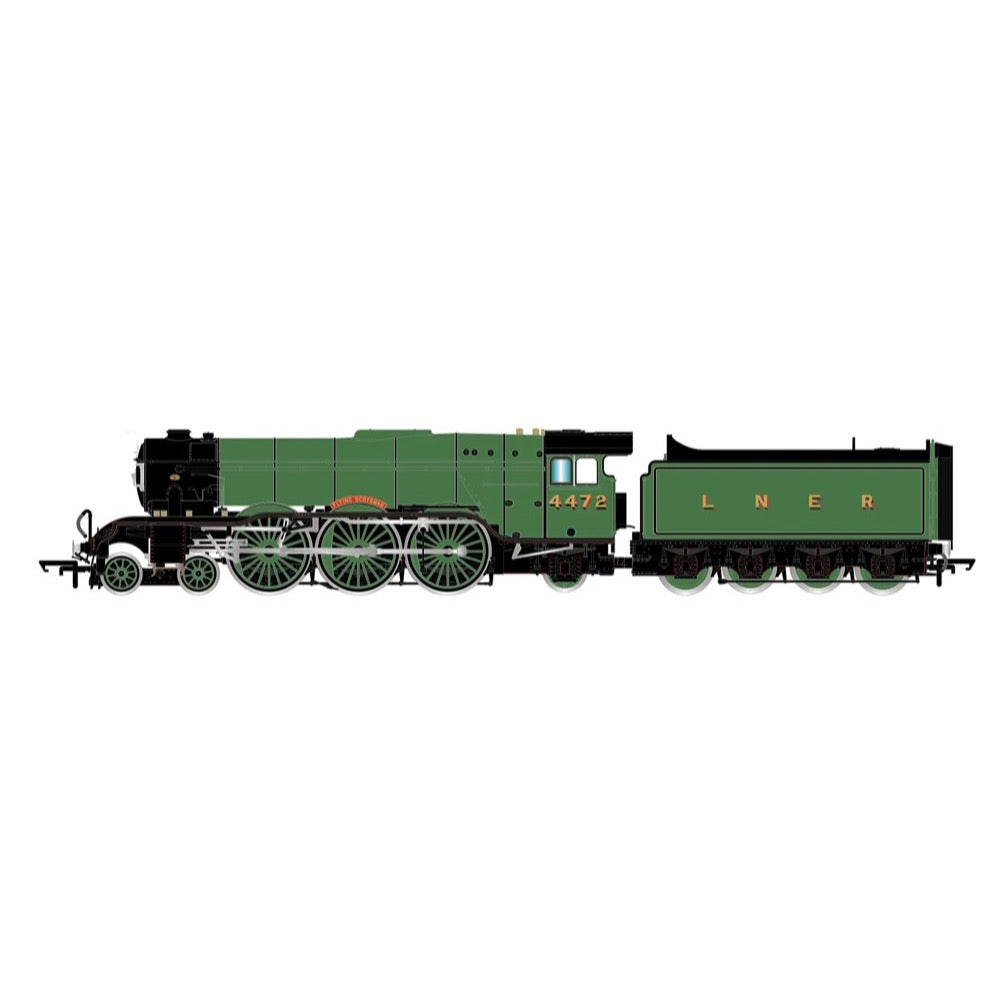
Hornby R30209 OO Hornby Dublo LNER A3 Class 4-6-2 4472 1963 Alan Pegler
This locomotive will be included in a bespoke box, along with a medallion featuring the Flying Scotsman centenary logo, operator, running number and year.
Largest of the constituent companies that would become the famous LNER was the GNR, and their Chief Mechanical Engineer naturally adopted the same position in the newly formed company, a man by the name of Herbert Nigel Gresley. As the brains behind the locomotive stock of the GNR, he had commissioned a new high speed passenger locomotive class to serve the GNR’s London to York main line. These became the A1 locomotive class, before a subsequent rebuild gave them the designation of the A3 class. One such example of this new and powerful class was named after the 10:00am service between London and Edinburgh, the named Special Scotch Express, or as it was renamed in 1924 the Flying Scotsman.
The locomotive in question, number 1472, was originally outshopped from the GNR’s Doncaster Works as a class A1 with GNR colouring, lettering and numbering before being renumbered and named in 1924 to promote the LNER’s Flying Scotsman service. Despite its new name and number, 4472 Flying Scotsman herself did not actually pull the Flying Scotsman service until 1928, spending the first four years of its life undertaking promotional work and light duties for the LNER, such as being its star exhibit at both the 1924 and 1925 British Empire Exhibition.
Relatively little of note would occur in the locomotives life and service for the next twenty years, with main changes consisting of her coupling with a corridor tender in 1928 (this allowed the locomotive to run non-stop between London and Edinburgh as the crew could be swapped via the tender mid run) before being reverted to the original tender in 1936. The game of LNER musical chairs did not stop here however, with the tender again being swapped in 1938 for a streamlined tender, with much the same appearance as a corridor tender without the corridor. Flying Scotsman would retain her streamlined tender until her withdrawal from British Railways service, numbered 60103, in 1963.
In preservation, Flying Scotsman has captured the hearts of the nation, becoming recognised by even those with less than a passing interest in railways and railway history. Under various notable owners, including Alan Pegler and Sir William McAlpine, Flying Scotsman has undertaken tours of America and Australia with mixed success and under ownership of the National Railway Museum saw a six million pound overhaul, cementing her future as a main line stalwart. Alan Pegler, the original saviour of the locomotive passed away in 2012, with his ashes being thrown into Scotsman’s firebox on the Farewell Alan Pegler rail tour between King’s Cross and York in 2018.
This Hornby Dublo model features the locomotive as it would have appeared in 1963 under the ownership of Alan Pegler, after it was reverted from BR condition to its LNER guise albeit with some more modern features such as its banjo dome. The locomotive is finished in a gleaming green paint which couples with the diecast boiler to create a finish close to that that could have been seen on the full size locomotive. The model features a strong 5 pole motor, cab detailing including crew figures, a diecast body and is DCC ready.
Specifications
- Item Length - Without Packaging (cm): 29.1
- Item Height - Without Packaging (cm): 5
- Item Width - Without Packaging (cm): 3.5
- Item Weight - Without Packaging: 0.6
- Item Scale: 1:76 Scale 00 Gauge
- License: Yes
- License line: Produced under licence for SCMG Enterprises Ltd. © SCMGE. Every purchase supports the museum.
- Finish: Painted
- Colour: Green
- DCC Status: DCC Ready 8 pin socket
- Operator: LNER
- Designer: Sir Nigel Gresley
- Wheel Configuration: 4-6-2
- Livery: LNER Apple Green
- Minimum Curve (mm): Radius 2
- Motor: 5 Pole Skew wound
- Number of Parts: 1
- Class: Class A3
- Buffer Type: Sprung Metal Buffers
- Coupling Type: NEM Tension Lock
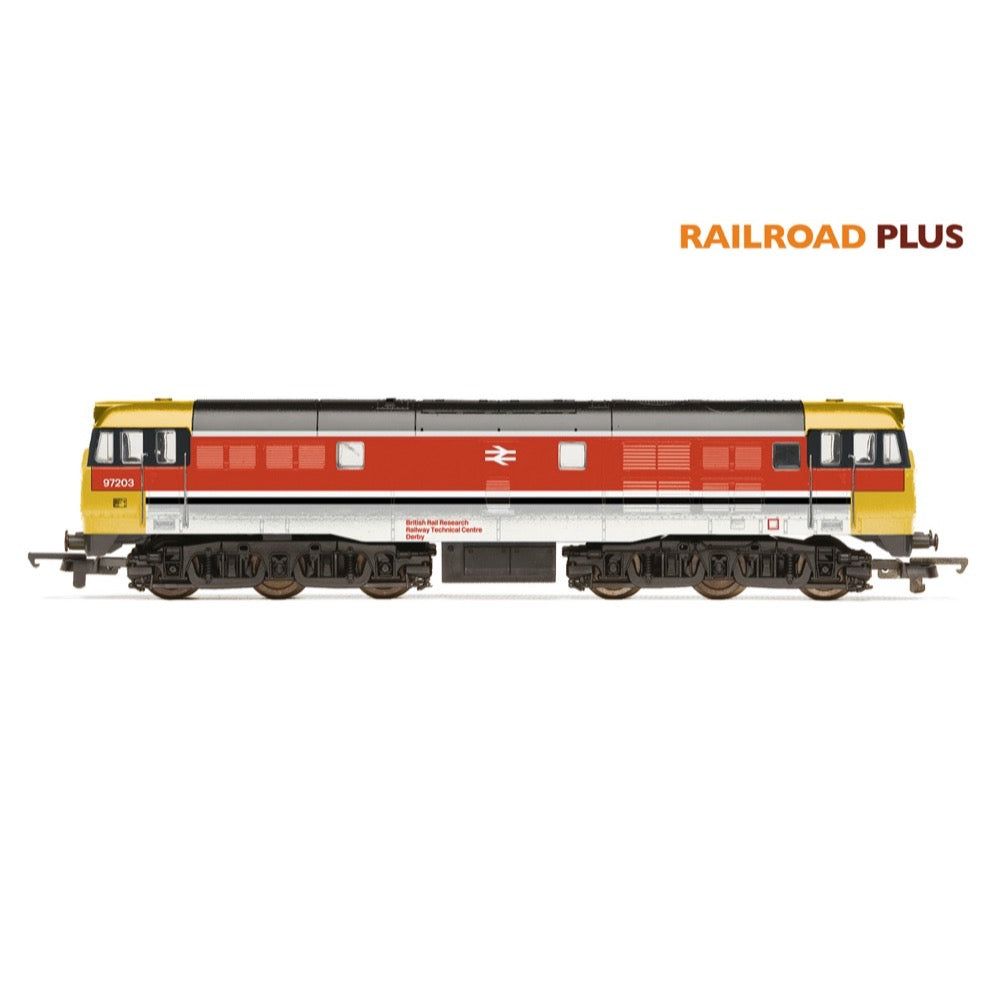
Hornby R30197 OO RailRoad Plus BR Departmental RTC Train Testing Class 31 A1A-A1A 97203
British Rail Class 31 diesel locomotives, also known as the Brush Type 2 and originally as Class 30, were built by Brush Traction from 1957-62. They were numbered in two series, D5500-D5699 and D5800-D5862. Construction of the first locomotive was completed in the final week of September 1957, and the handing-over took place on 31 October. The first Class 31 entered service in November 1957, after the launch of the Class 20 locomotive and was one of the Pilot Scheme locomotives ordered by British Railways to replace steam traction.The Railway Technical Centre (RTC) in London Road, Derby, England, was the technical headquarters of the British Railways Board, and was built in the early 1960s. British Rail described it as the largest railway research complex in the world, and certain Class 31s served in a capacity as locomotives aiding experiements and research.
Specification
- Item Length - Without Packaging (cm): 22.5
- Item Height - Without Packaging (cm): 11.2
- Item Width - Without Packaging (cm): 36.2
- Item Weight - Without Packaging: 0.68
- Item Scale: 1/76 Scale 00 Gauge
- Finish: Painted
- Colour: Multi
- DCC Status: DCC Ready 8 pin socket
- Operator: BR
- Designer: Brush Traction
- Livery: BR Departmental
- Minimum Curve (mm): Radius 2
- Motor: 3 Pole Skew wound
- Number of Parts: 1
- Class: Class 31


